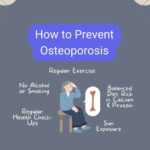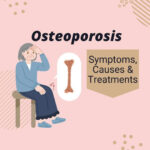Each year, millions of older adults are treated in emergency departments due to fall injuries, with one out of every five falls resulting in severe injuries such as broken bones or head trauma. Home safety for elderly is a very important to prevent severe health issues among our senior population.
By implementing appropriate measures you can significantly reduce the risk of accidents and provide peace of mind for both you and your loved ones.
Taking proactive steps to enhance senior safety not only safeguards their physical well-being but also promotes their independence and overall quality of life. With a secure home environment, they can maintain their daily routines without constant worry or fear of accidents.

Making the Home Safe and Accessible for Older Adults
Adapting the home to accommodate mobility challenges
One of the first steps in ensuring home safety for elderly individuals is addressing any mobility challenges they may face. Consider widening doorways and hallways to accommodate walkers or wheelchairs. Rearranging furniture or removing unnecessary obstacles can create clear pathways that are easy to navigate.
Installing grab bars and handrails for added support
Installing grab bars and handrails strategically around the house can provide much-needed support and prevent falls. These bars should be placed in areas where balance may be compromised, such as near stairs, in bathrooms, or along hallways.
Ensuring proper lighting throughout the house to minimize falls
Proper light plays a vital role in preventing falls among older adults. Focus on illuminating high-traffic areas such as hallways, staircases, entrances/exits, kitchens, and bathrooms. Nightlights strategically placed in bedrooms or hallways can also provide guidance during nighttime trips to the bathroom, reducing the risk of falls.
Removing tripping hazards such as loose rugs or cluttered pathways
Tripping hazards are a significant concern for older adults, as even a minor stumble can result in serious injuries.
Start by removing loose rugs or securing them with non-slip backing. Ensure that all pathways are clear of clutter and obstacles. By keeping floors free from items like shoes, cords, or furniture, you create a safer environment for elderly residents.
Room-by-Room Guide to Home Safety For Elderly
Entrance
- Better outdoor lights: Adequate lighting outside the house is essential for preventing accidents.
- Zero-step entrance: Steps can pose a significant risk for older adults with mobility issues. Consider modifying the entrance by creating a zero-step entryway or installing ramps instead of stairs. This modification ensures easy access for individuals using mobility aids such as wheelchairs or walkers.
- Package shelf: Having a designated package shelf near the entrance reduces the need for bending down or reaching high to retrieve deliveries.
- Handrails: Installing sturdy handrails along uneven surfaces or stairs provides support while entering or exiting the home.
Living Room
- Securing loose cords: Loose cords from electronic devices like lamps, televisions, or charging cables can easily become tripping hazards if left unattended. Make sure all cords are neatly secured against walls or furniture using cord clips or cable covers.
- Arranging furniture for clear pathways: Ensure that furniture is arranged in a way that provides clear and unobstructed pathways throughout the living room. Remove any unnecessary items or clutter that could impede mobility or increase the risk of falls.
Kitchen
- Using non-slip mats: Place non-slip mats near sinks, stoves, and other areas where water or spills are likely to occur.
- Rearrange: Organize pots, pans, dishes, herbs and everything one needs on a daily basis in a way that bending over is minimized, and standing on chairs or steps is not necessary.
Bathroom
- Grab bars: In bathrooms, installing grab bars near toilets and inside showers can help seniors maintain their balance while using these facilities. Handrails on staircases offer additional support during ascent and descent, reducing the risk of accidents. By incorporating these supportive features into the home’s design, caregivers can promote independence and safety for elderly individuals.
- Nonslip mats: Slippery surfaces in the shower or bathtub can be extremely dangerous for seniors. To prevent accidents caused by slipping, it’s crucial to use non-slip mats or adhesive strips in these areas.
- Curb-less shower: With nothing to step over, taking a shower is safer. And, more accessible with a wheelchair.
- Higher toilets: A raised toilet seat increases the height of the toilet, making it easier for seniors to sit down and stand up without straining their joints.
Tips for Safe Home Care for Seniors
Hiring Trained Caregivers: Caregivers should have proper training and experience in providing care to seniors, including knowledge of how to prevent accidents and respond effectively in case of emergencies.
Regularly Assessing The Home Environment: By identifying possible hazards and taking proactive steps to mitigate them, you can significantly reduce the risk of injuries or falls. Make sure not to forget assessing smoke detectors, fire extinguisher and surge protectors.
Prepare For Emergencies: Have a well-stocked emergency kit readily available and easily accessible. This kit should include essential items such as a first aid kit, and a list of emergency contacts.
Regular Exercise and Physical Activity: Regular exercise and physical activity play a vital role in maintaining strength, balance, and overall well-being for elderly individuals. Engaging in physical activities can help reduce the risk of a fall and improve mobility.
Frequently Asked Questions
Now that you have learned about home safety for the elderly, let’s address some common questions you may have.
How can I make my home safer for my elderly loved ones?
To make your home safer for elderly individuals, start by removing any tripping hazards such as loose rugs or cluttered walkways. Install grab bars in the bathroom and ensure there is adequate light throughout the house. Consider installing a medical alert system so they can easily call for help if needed. It’s important to regularly check and maintain smoke detectors and fire extinguishers.
What are some tips for preventing falls in the home?
Preventing falls is crucial. Make sure all areas of the house are well-lit and install handrails on staircases. Remove any obstacles that could cause trips or slips, such as loose cords or slippery rugs. Encourage your loved ones to wear properly fitting shoes with non-slip soles and consider using assistive devices like walkers or canes if necessary.
How do I create a safe bathroom environment for seniors?
Creating a safe bathroom environment involves several measures. Install grab bars near the toilet and shower area to provide stability. Use non-slip mats or adhesive strips in the bathtub or shower to prevent slipping. Adjust water temperatures to avoid scalding accidents, and consider using a raised toilet seat or shower chair for added comfort and safety.
Should I be concerned about fire safety in every room?
Absolutely! Fire safety should be a top priority in every room of your home. Ensure that smoke detectors are installed in each bedroom, hallway, and living area, and test them regularly to make sure they are functioning properly. Keep a fire extinguisher within reach on each floor of your home, especially near high-risk areas like kitchens or fireplaces.
Why is prioritizing home safety important for elderly individuals?
Prioritizing home safety for the elderly is crucial because it helps prevent accidents and injuries that can have severe consequences. By taking proactive measures to create a safe living environment, you can reduce the risk of falls, fires, and other potential hazards. Ensuring their safety allows them to maintain their independence and enjoy a higher quality of life.
Can I install grab bars in the bathroom myself?
Yes, installing grab bars in the bathroom is often a simple DIY project. However, if you’re not comfortable doing it yourself, consider hiring a professional handyman or contractor who specializes in home modifications for seniors.
How often should I test my smoke detectors?
It’s recommended to test your smoke detectors at least once a month. Press the test button on each detector and listen for the alarm sound. If there is no sound or if it’s faint, replace the batteries immediately.
Are there any specific fire safety precautions for individuals with mobility issues?
Yes, individuals with mobility issues should have an evacuation plan in place in case of a fire emergency. Make sure there are clear pathways throughout the house and consider investing in fire escape ladders for upper floors.
What should I do if my loved one experiences a fall at home?
If your loved one experiences a fall at home and they are injured or unable to get up on their own, call for medical help immediately. It’s important not to move them unless they are in immediate danger or need CPR.
Are there any financial assistance programs available for home modifications?
Yes, there are various financial assistance programs available that can help cover the costs of home modifications for elderly individuals. Contact your local Area Agency on Aging or check with nonprofit organizations that focus on senior care for more information.
References
https://www.nia.nih.gov/health/infographics/aging-place-tips-making-home-safe-and-accessible
- How To Improve Gut Microbiome – 26 May 2024
- Chemo neuropathy treatment: What to do? – 19 May 2024
- How to Prevent Osteoporosis: Effective Strategies & Simple Steps – 28 December 2023





